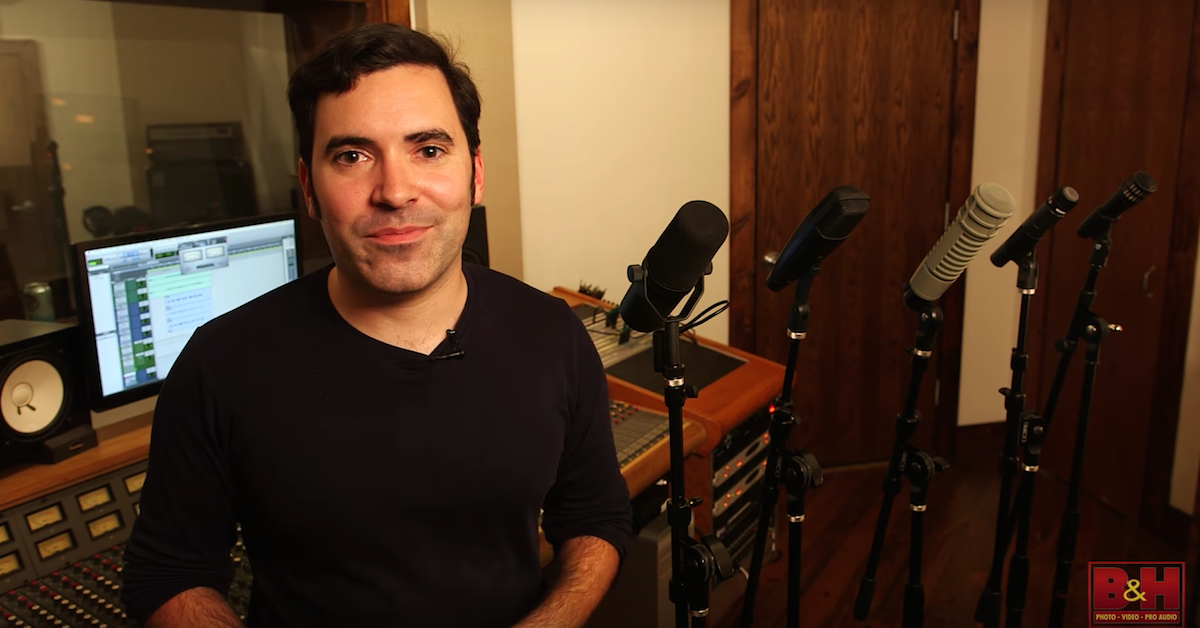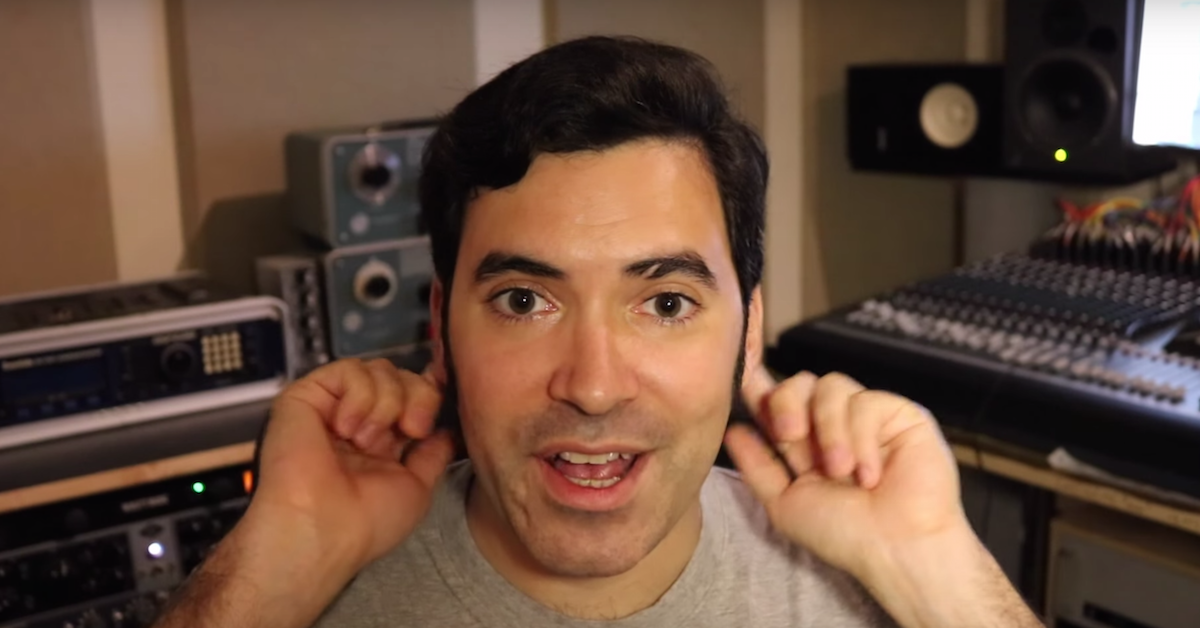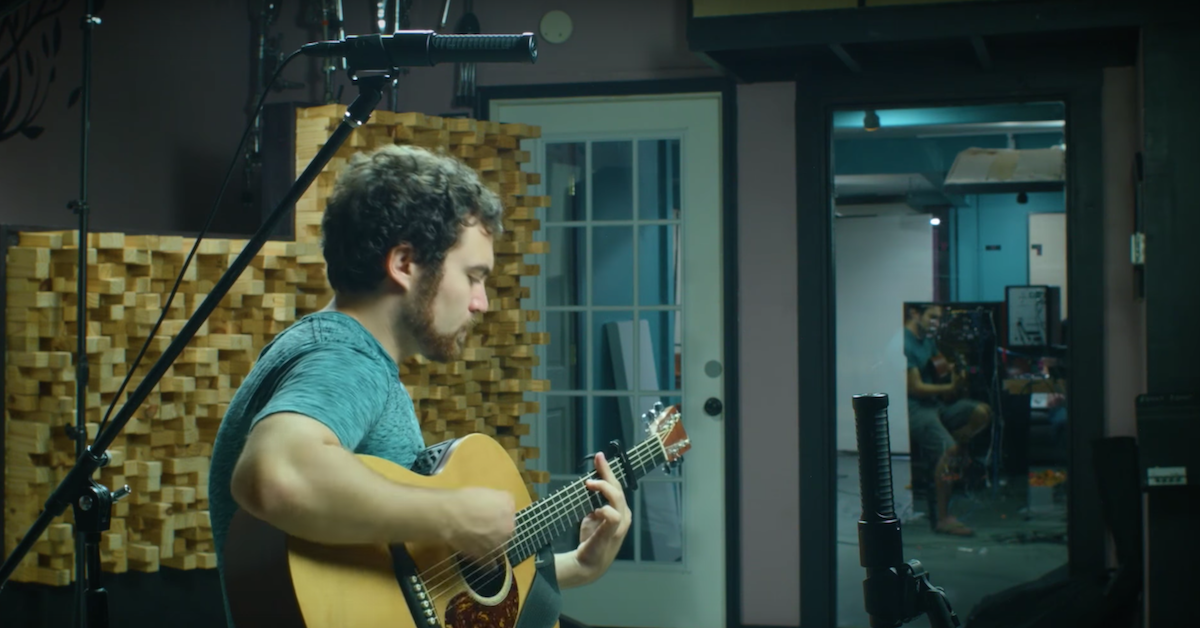Why I Love Recording With an Electro-Voice RE20 (+ 4 Favorite Uses)
Article Content
If somebody paid me a dollar for every instance of the words “studio legend” I could find in ad copy for recording gear, I could probably raise enough money to buy a vintage Pultec EQ or Fairchild compressor. You know… a real studio legend.
So, yes, there is a bit of an eye roll implied when I tell you now that the Electro-Voice RE20 is a true studio legend. But also, those words are probably an appropriate description of the mic. More importantly, unlike some other studio legends like the aforementioned Fairchild 670 — an antique that will set you back about as much as a new Tesla — the RE20 is a piece of studio gear you could probably go out and buy right now.
Electro-Voice’s “Condenser Killer”
Electrovoice introduced the RE20 in 1969, intending it to be a “condenser killer” — a dynamic mic that could offer the clarity and detail of a high-end condenser, but without the delicate build and high price tag. I wouldn’t exactly say that owning an RE20 negates the need for good condenser mics (try hanging a couple of those heavy suckers above a drum kit sometime), but the RE20 is an indispensable part of my mic locker. I don’t know a serious recordist who wouldn’t say the same.
The RE20 quickly became a favorite for broadcast applications, and chances are you’ve seen images of radio or podcast hosts talking into RE20s (or Shure SM7Bs, which my colleague Ian Vargo already wrote about). But its applications are not limited to talk radio blowhards — the RE20 can be used with confidence on a very broad range of sound sources.
The bottom line is that the RE20 is a versatile, durable, high-quality studio workhorse. If you have one, you already know this. If you don’t, I’m about to make you want one. Ready? Here we go.
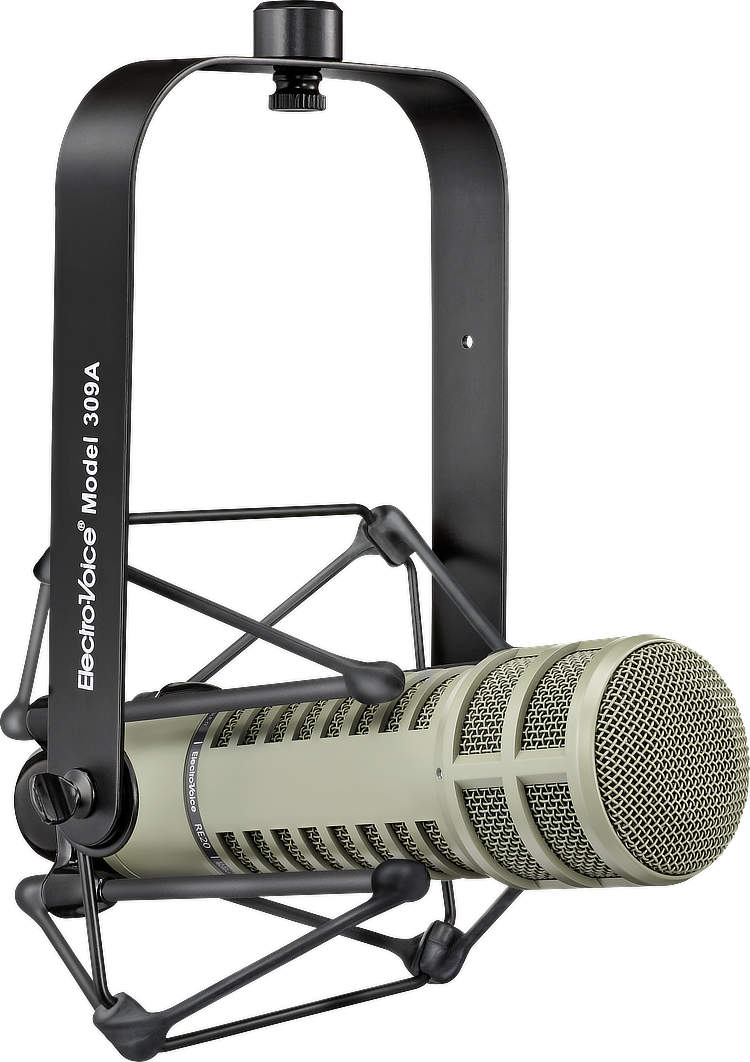
What Makes the RE20 So Special?
The first thing about the RE20 worth mentioning is its frequency response. Though not quite as “ruler flat” as, say, a U67, this dynamic mic captures close to the entire range of audible sound pretty evenly — all the way down to 45 Hz. That’s low enough to handle bass cabs and kick drums with ease, while still offering a strong but not overbearing top end. A good word to describe the sound of an RE20 would be “honest.”
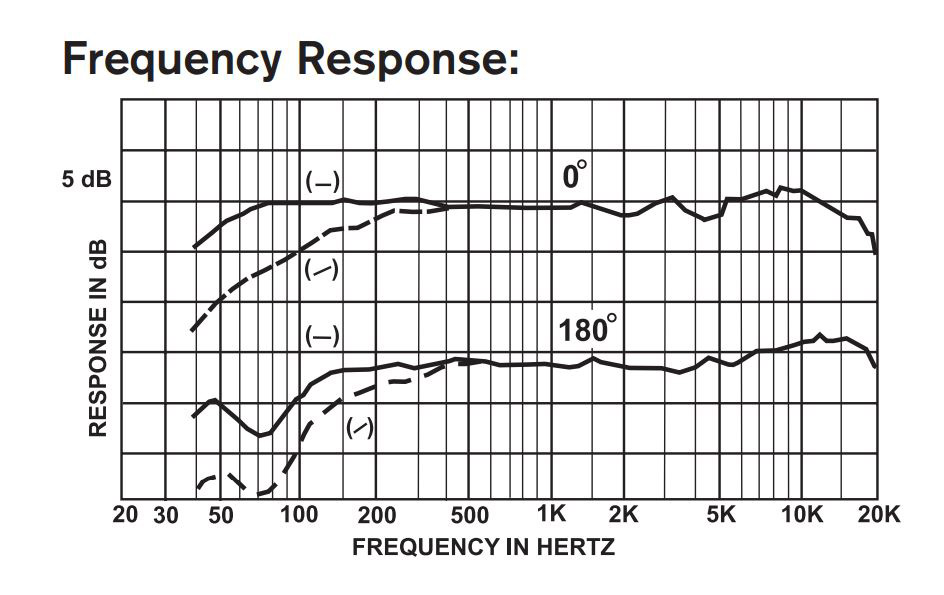
What really makes the RE20 stand out, however, is how reliably it offers that flat response. The “Variable-D” technology used in the RE20 makes it basically immune to the bass-boosting proximity effect and off-axis coloration. That means you can put it right in front of someone’s lips and still capture their voice with nuance and clarity.
The cherry on top of this sonic sundae is that these babies are tough. In addition to taking high-SPL sound sources like a champ (hello, drum kits and Marshall stacks), the RE20 is the descendent of the EV 664, which was nicknamed the “Buchanan Hammer.” How did the 664 earn that nickname, you ask? Well, it was manufactured in Buchanan, Michigan… and you could literally use it to hammer a nail into a board, then plug it in and start recording with no issues.
I’ll offer an embarrassing story from my own life as proof of concept here: the RE20 was one of the first pieces of serious studio gear I ever bought, and on my first day of using it in my old practice space, the stand it was on got tipped over and it fell, face first, into a cinderblock. Yeah, I’m not proud to admit that, but I was young and inexperienced, ok? More importantly, the mic still worked just fine after that fall, and has served me well for many years since.
The moral of this story is: whether you’re shopping for a very expensive hammer or a very affordable studio workhorse microphone, the RE20 absolutely deserves to be on your short list. Retailing at around $450 US, the RE20 is certain to be among the highest bang-for-the-buck pieces of kit in your studio.
Here are a few ways I like to use mine:
1. Kick Drum
When I put a close mic on a kick drum, I’m primarily looking to capture a couple things: low end “umph” and the snap of the batter. The RE20’s frequency response, which could poetically be described as “broad and flat as a Texas highway,” ensures that it is most certainly capable of giving me both. Because it basically doesn’t suffer from the proximity effect, I know that the sound I’ll get will be detailed and usable, never mushy or “wooly.”
Compared to some more modern, purpose-built kick drum mics, you’ll find the RE20 has a bit more midrange. If you’re after a more “vintage” drum tone, that midrange might actually be just what you’re after. If your vibe is more modern, you might like it better with a generous EQ cut in the 300-500 Hz range, perhaps with an upper midrange presence bump. The good news is that this mic takes EQ like a pro, so you can scoop those mids with confidence.
If you’re after some truly window-rattling low end, pair the RE20 with your favorite large diaphragm FET condenser or a sub kick mic for best results.
2. Bass
I purposely didn’t specify whether I meant electric or upright bass here because this mic excels at recording both. The RE20 is a natural “bassment” dweller, with its frequency response extending down to 45 Hz — almost exactly the fundamental frequency of the low E string. It does start to taper off a bit north of there, around 70 Hz, but that sort of gentle low-end roll off is usually exactly what we’re looking for to get bass to sit right in a mix.
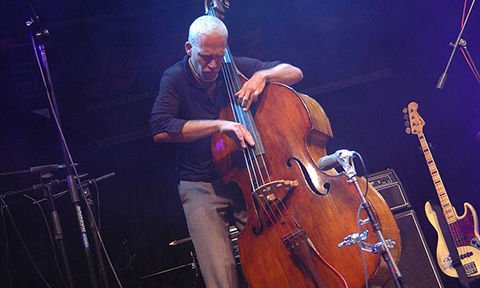
Avishai Cohen, bass ripper, ripping on bass in front of a ripping bass mic
Don’t hesitate to put one right up against the grill of a bass cab. Its strong midrange means you’ll still get lots of the frequency content that makes a bass “sing” in a mix.
For upright, try one looking right at the bridge, placed as close as you can reasonably get it if bleed from other instruments is an issue. The RE20 will give you the “business” part of the upright bass tone — solid low end with good presence and clarity — while rejecting other instruments that might be in the room.
3. Chunky Electric Guitars
If I’m being honest, the RE20 is rarely my first choice for electric guitar recording, but I also don’t record a whole lot of music with heavy guitars. That said, when I’ve needed a powerful rhythm guitar tone in the past, this mic has delivered beautifully. If you record electric guitars that need some real weight behind them, the RE20 is absolutely worth trying.
My go-to placement for this kind of guitar tone would be right up on the grill of the cab, and I’d expect to do some EQing to get things to sit just right. The low roll-off switch has a corner frequency a bit too high to be useful here (400 Hz), so you’ll likely end up needing a separate high-pass filter and some midrange sculpting to get things just right.
4. Scratch Vocals… or Final Vocals
Simply put, the RE20 is a great vocal mic. Honestly, I don’t even feel like I need to qualify that statement — but come on, what kind of cork-sniffing gear enthusiast would I be if I didn’t say more?
If you’re trying to record a vocal take from a singer in the same room as the rest of the band, this mic is a natural choice. Vocalists can get right up on it without introducing unwanted coloration, which means you can capture a usable vocal take with minimal bleed from other instruments. The mic has an internal pop filter that will help prevent plosives when singing close into it, though external pop filters are still commonly used as well.
Even without the need to mitigate bleed in a live recording, though, the RE20 is a serious contender for recording a polished vocal in a more controlled studio setting. It doesn’t have the “instant magic” that coveted tube condensers can have, so be prepared to bring out some high end sparkle with EQ. That 400 Hz roll-off switch really comes in handy, too.
Is it going to be an instant killer on every vocalist? Nope. But I’ve been underwhelmed by boutique tube mics costing 10 times the price of a new RE20. Audition it alongside your favorite condensers when you shoot out mics for a vocal session. My guess is you’ll find it wins out more often than you think.
Tip: Pair With a Mic Activator for Best Results
One notable drawback of the RE20 is that it tends to be a gain-hungry mic. Though the mic itself has hum-canceling features, some applications have traditionally required an especially clean preamp in order to get a signal hot enough to use.
Luckily, recent years have seen an explosion of “mic activators.” I use a Cloudlifter, but there are many other great options that allow phantom power to be safely used with dynamic and ribbon mics. It does raise the overall cost by a bit, but it’s worth investing in a Cloudlifter or similar when adding an RE20 to your mic collection. The same can be said of the Shure SM7B, for those keeping score.

Before You Go Buy One…
Though the RE20 may be especially notable for the ratio of “great recordings you’ll make” to “nights you’ll lose sleep worrying about how much you spent on one mic,” it isn’t just a great mic for the money. It’s a great mic, period. Sure, there are haters out there, but most serious recordists will tell you that an RE20 is a solid investment. If you hadn’t heard that already, now you have.
Before you go shopping, it’s worth pointing out that Electro-Voice has tweaked the recipe over the years in order to produce a couple of similar (but not identical) mics, notably the RE27N/D and the RE320. The RE27N/D features a neodymium magnet in order to provide hotter output and a brighter tone, in addition to having more roll-off options.
The RE320 is a less expensive cousin of the RE20 that claims to be specifically intended for music recording applications. It features an extra EQ curve tailored specifically for kick drums, which might appeal to those after a more modern sound right out the box.



